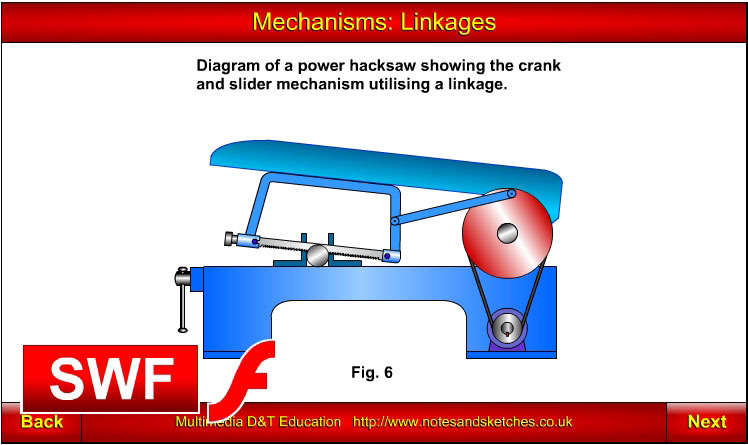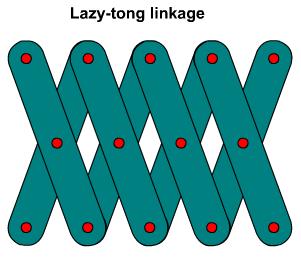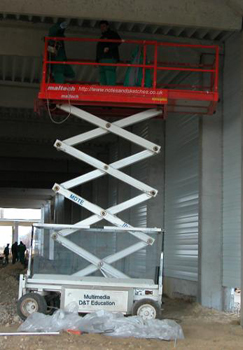Linkages
A linkage is a system of connected rods and levers that are used to transmit motion and force. Linkages may be used to:
- change the direction of motion and force
- change the size of the output motion compared to the size of the input motion
- create parallel motion
- change one type of motion into another type of motion.
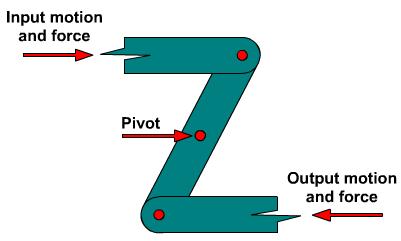
The linkage above illustrates how the direction of motion and force may be changed.
|
|
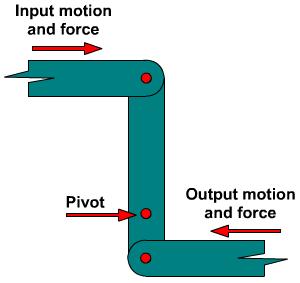
The diagram above illustrates how a linkage may be used to:
- change the direction of motion and force
- change the size of the output motion compared to the size of the input motion
- change the size of the output force compared to the size of the input force
|
|
| |
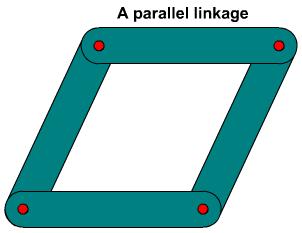
The diagram above illustrates how a linkage may be used to create a parallel motion.
|
| |
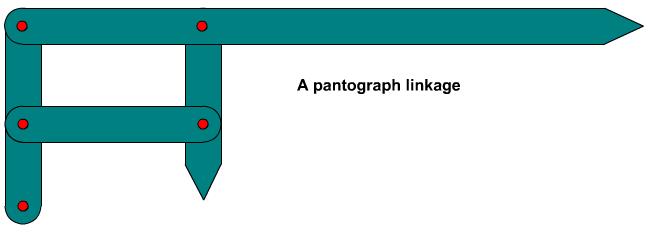
The diagram above illustrates a pantograph linkage. A pantograph is used to copy and rescale shapes and drawings.
|
| |
|
|
|
| |
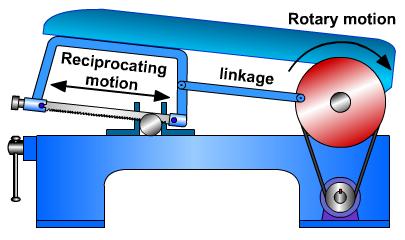
The diagram above illustrates how a linkage is used in a crank and slider mechanism
and how rotary motion is converted into reciprocating motion.
|
| |
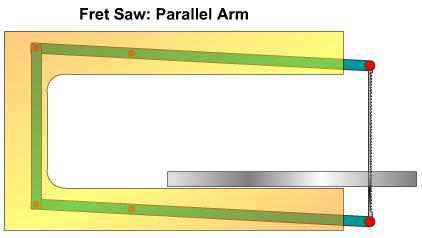
Parallel motion linkage used in a parallel arm fret saw.
|
| |
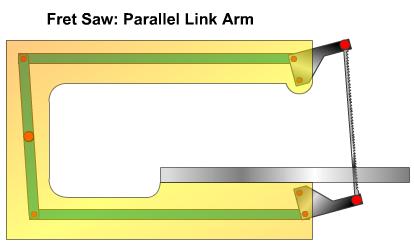
Linkages connected to two bell crank levers create a near vertical reciprocating sawing action.
|
| |
Linkages found in a sewing machine.
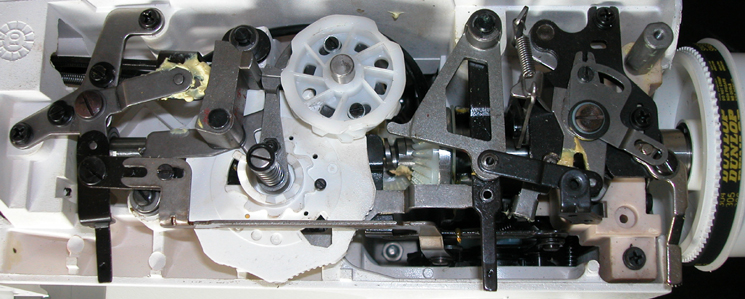
The photograph above shows various linkages and levers in a typical sewing machine. Also visible in the photograph is a belt and pulley drive, nylon bevel gears, retaining springs and lubricating grease. |
